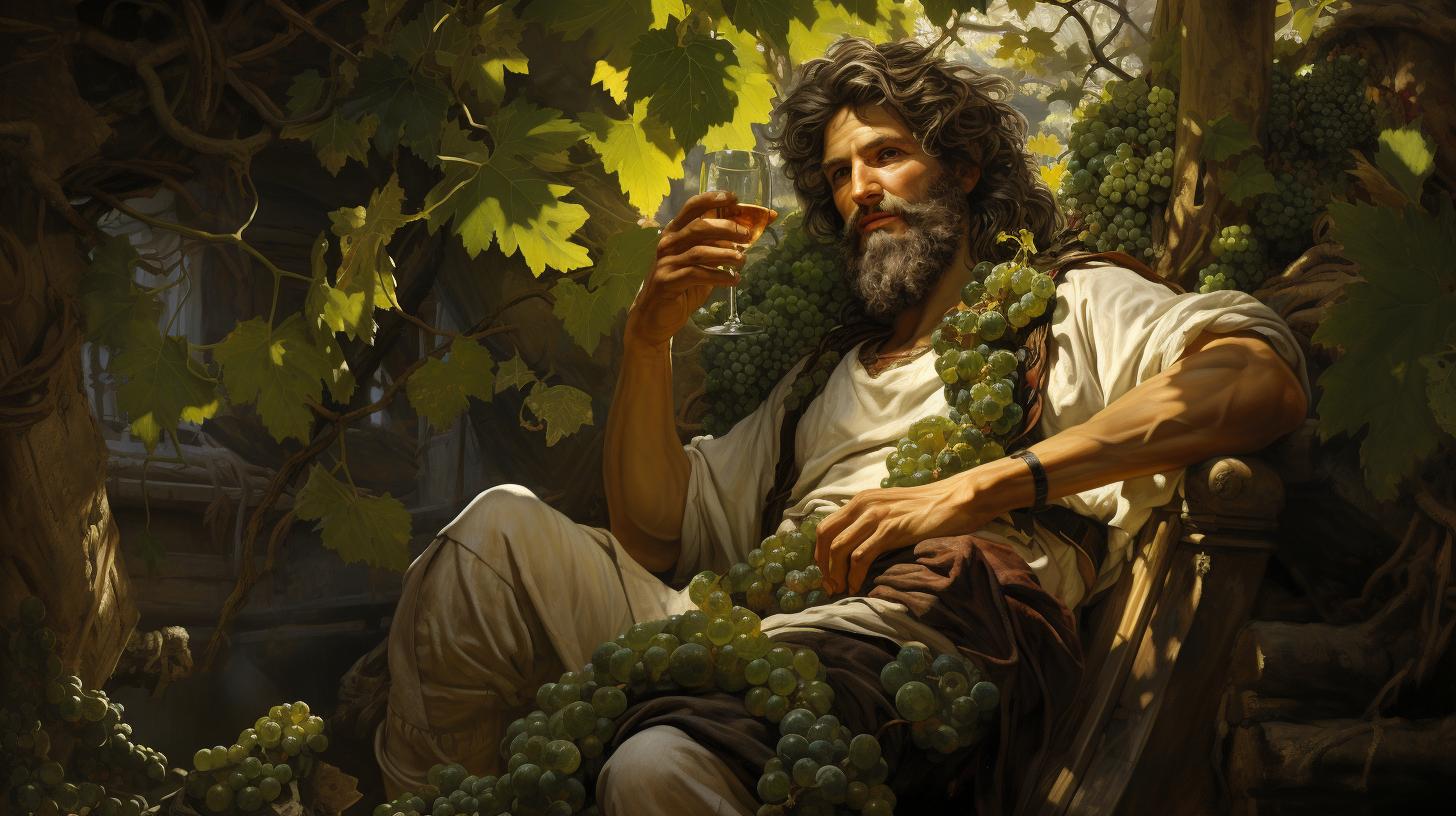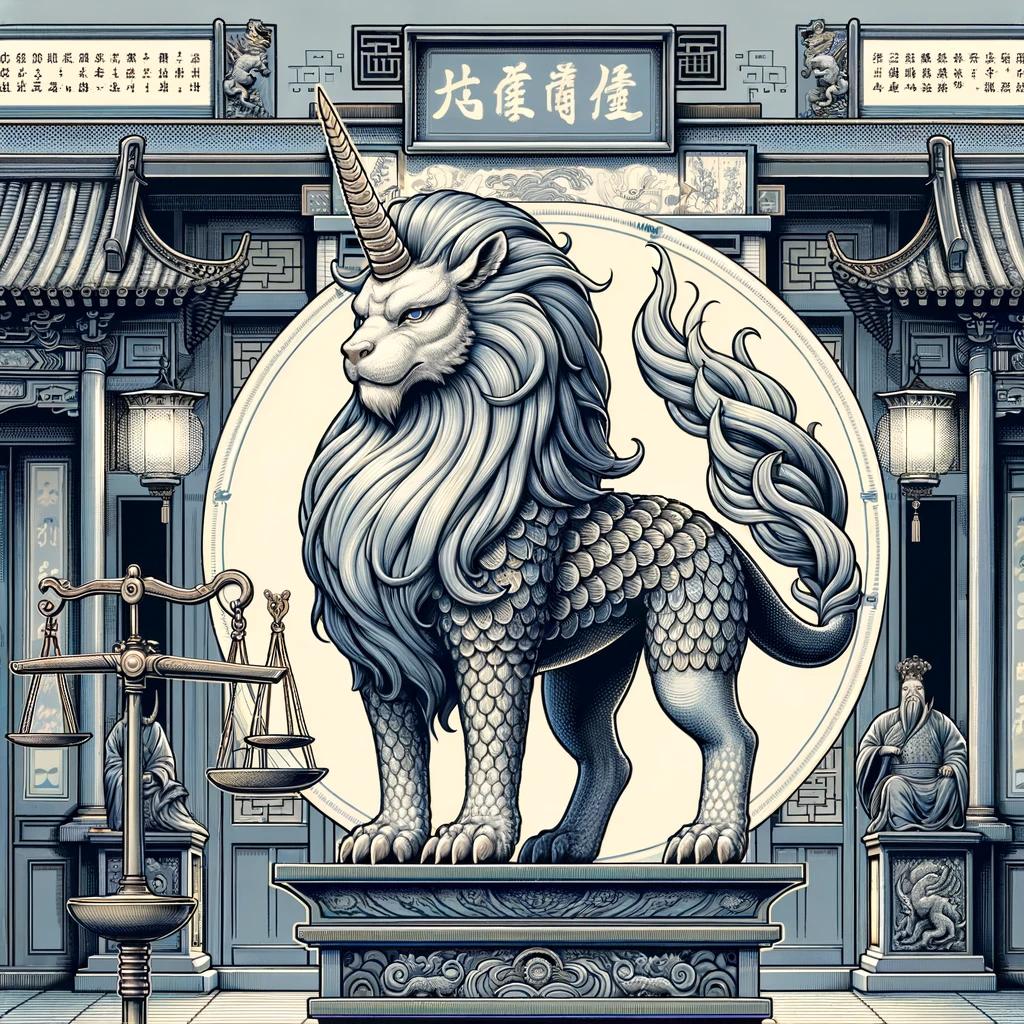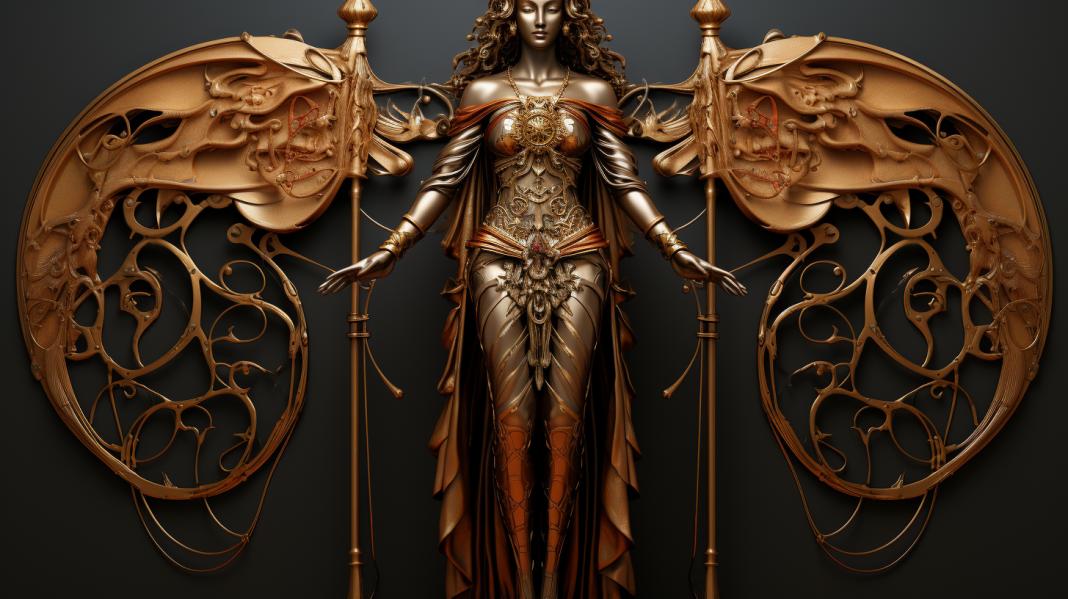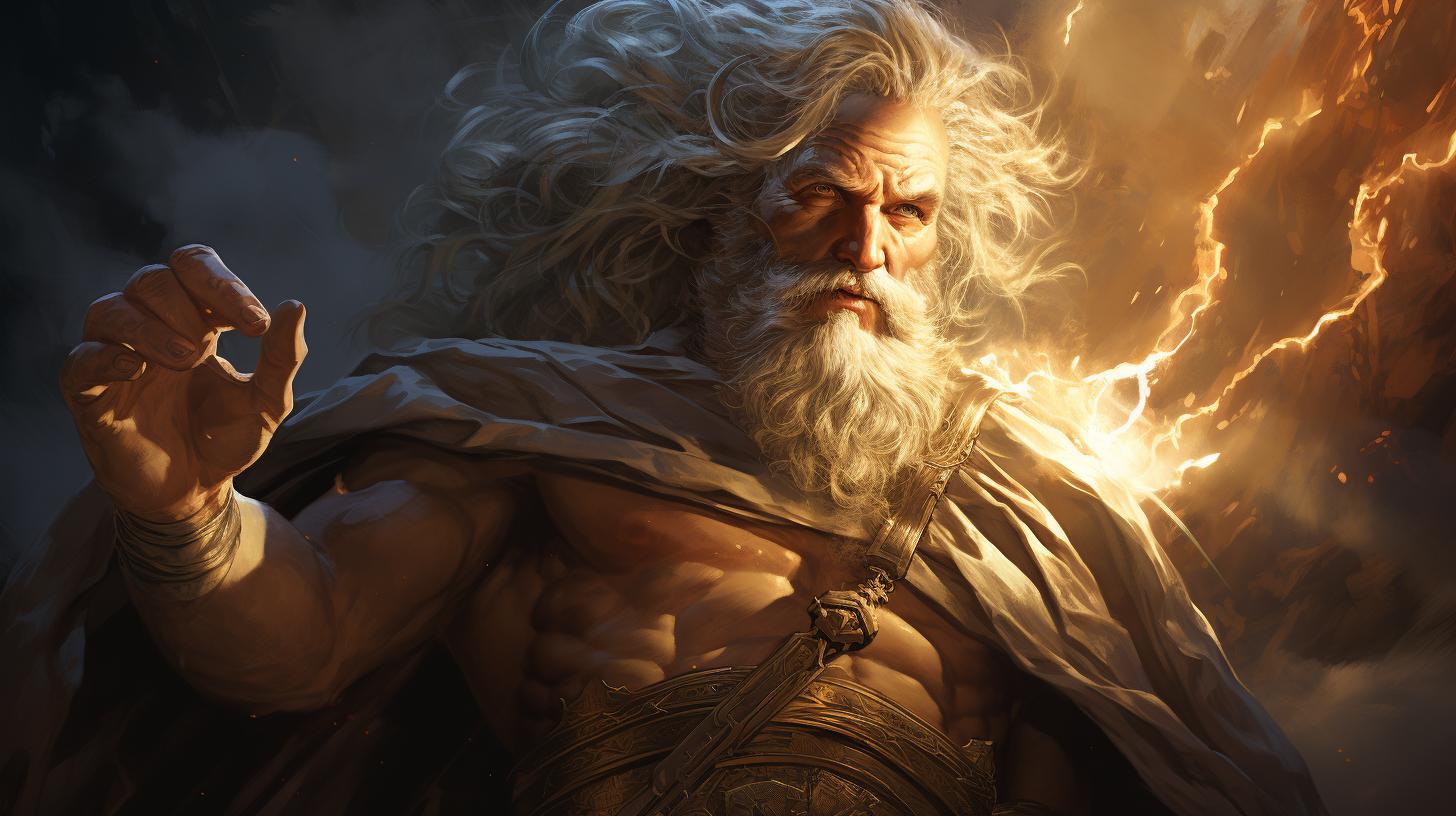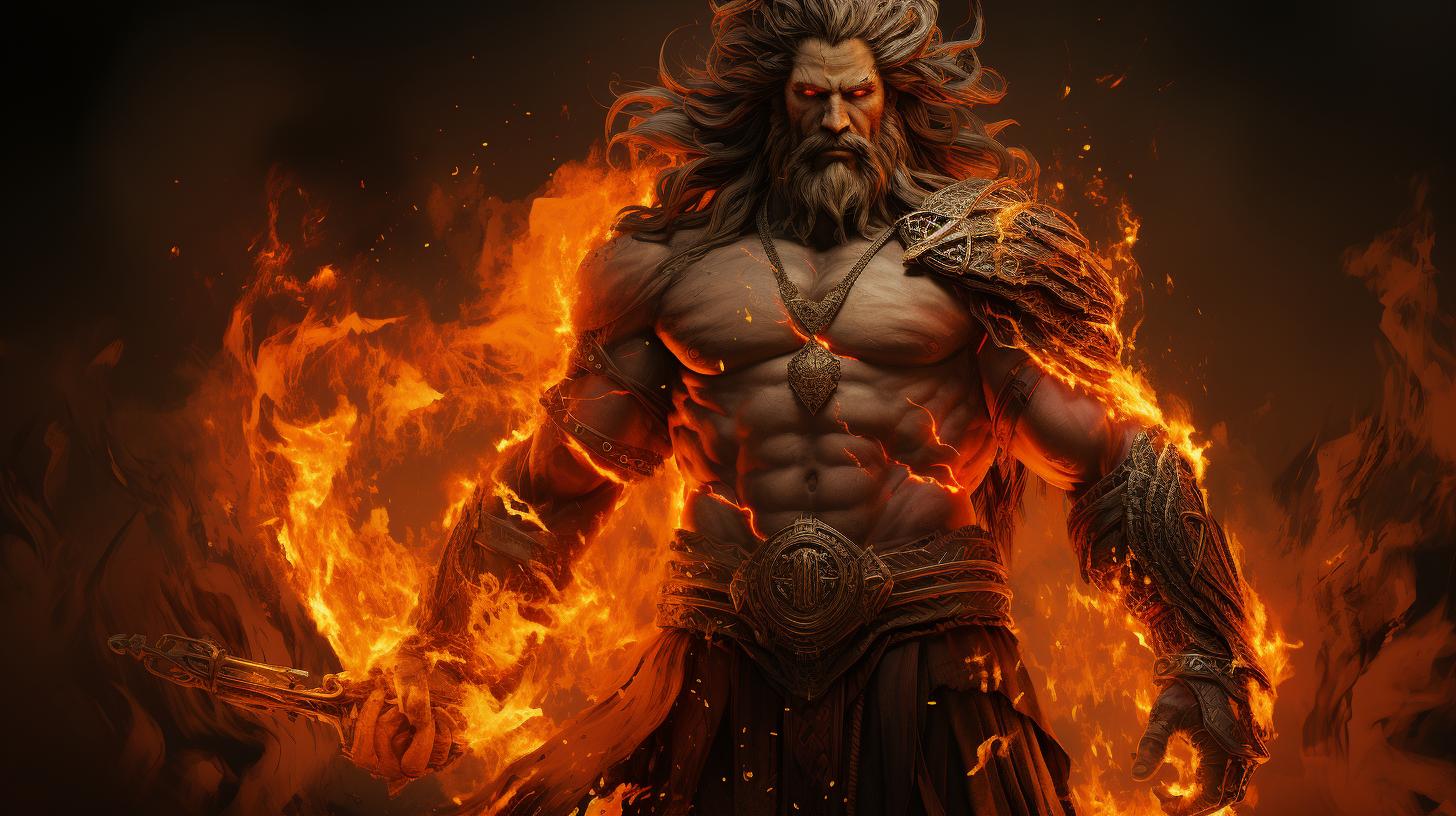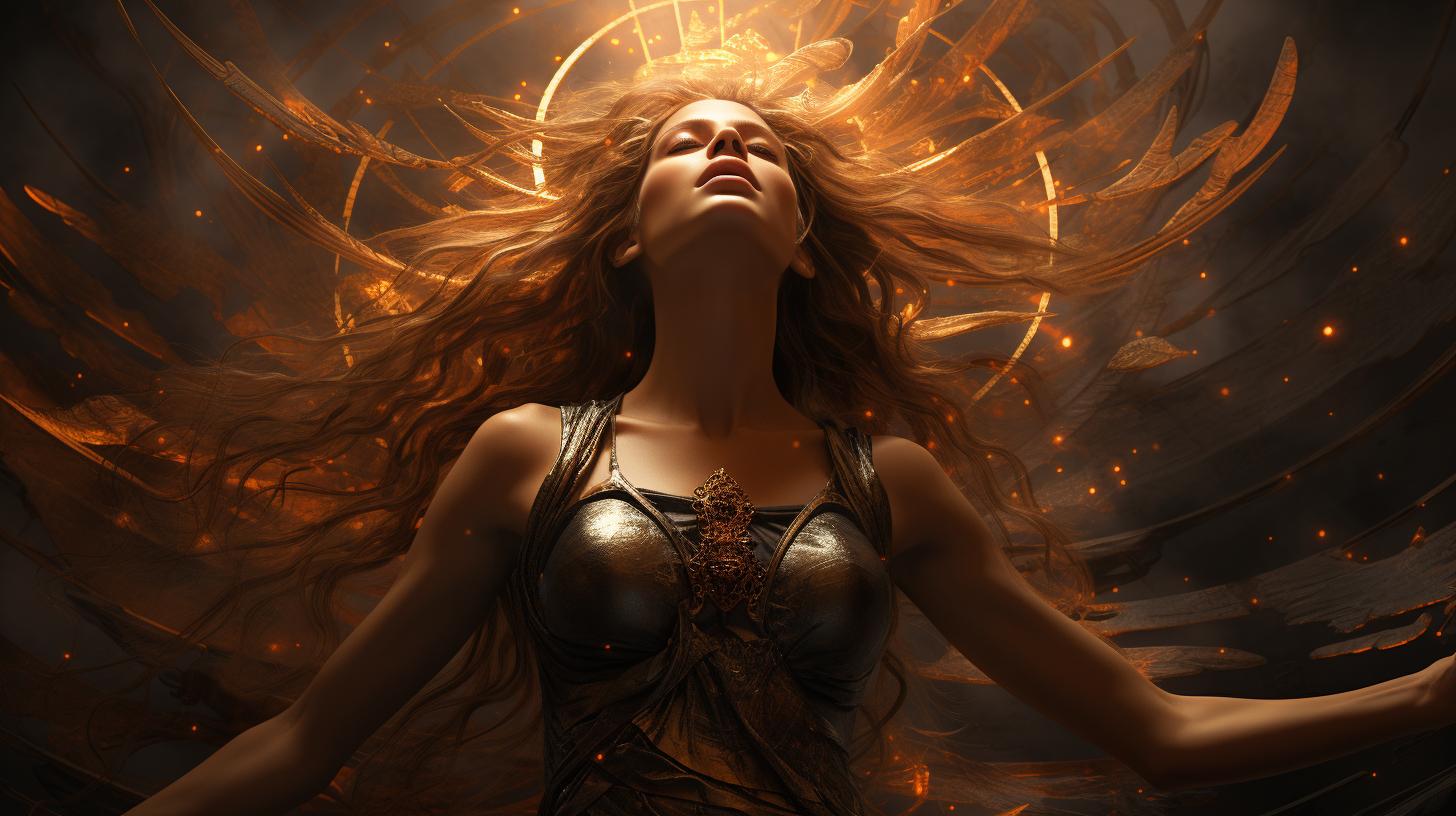Etruscan God Fufluns: Mythology and Influence in Ancient Etruria
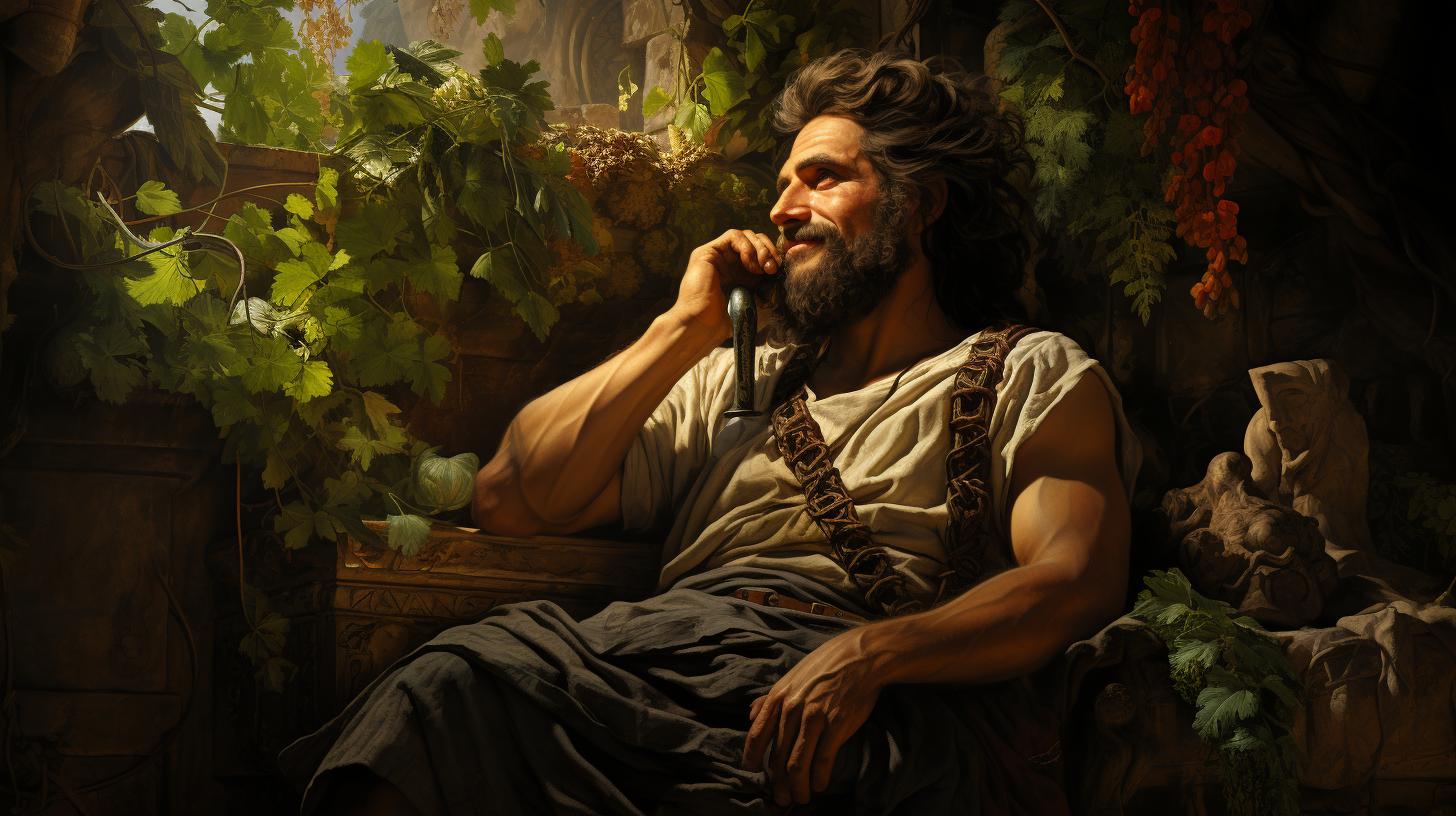
The Etruscan god Fufluns, also known as Puphluns, holds significant importance in Etruscan religion as the deity of vegetation, wine, happiness, and health. Born to Semla and the god Tinia, Fufluns ranks ninth among the 16 gods governing Etruscan astrological houses.
Associated with Apulu and Catha, Fufluns is often depicted as a beardless youth or an elderly figure, bearing symbols of the thyrsus, satyrs, and maenads. With parallels to Dionysus, Fufluns’ myths explore miraculous births and tragic love stories, leaving an intriguing mark on Etruscan mythology.
The Etruscan Pantheon
In ancient Etruria, the Etruscan pantheon was a complex and diverse assembly of deities that played significant roles in the religious beliefs and practices of the Etruscan civilization. This section provides an overview of the Etruscan gods, highlighting their importance and the unique characteristics that distinguished them from other pantheons of the time.
Overview of Etruscan Gods
- Etruscan religion recognized a large number of gods, each governing different aspects of life.
- These deities were believed to have power over various realms such as nature, agriculture, fertility, war, and the afterlife.
- Some influential Etruscan gods include Tinia (the supreme deity), Uni (goddess of fertility and childbirth), Turan (goddess of love and vitality), and Mantus (god of the underworld).
- Each deity possessed unique attributes, characteristics, and associated symbols that played vital roles in Etruscan religious rituals and cult practices.
Fufluns: The Etruscan God of Wine and Vegetation
Among the diverse pantheon of Etruscan gods, Fufluns held a significant position as the god of wine, vegetation, and fertility.
Revered for his association with the life cycle and abundance in nature, Fufluns played a crucial role in Etruscan religious beliefs and practices related to agriculture, happiness, and overall well-being.
As the son of Semla and the god Tinia, Fufluns occupied a prominent place in the hierarchy of the 16 Etruscan astrological deities.
His sacred site was Populonia, an Etruscan city named in his honor.
Iconographically, Fufluns was depicted as a beardless youth or an elderly figure, often carrying symbols like the thyrsus, satyrs, and maenads, which were commonly associated with festivities, wine, and revelry.
Additionally, he was frequently portrayed alongside other Etruscan deities such as Apulu (Apolo) and his mother Semla, indicating his association with the underworld and his role as a psychopomp, guiding and protecting souls.
Fufluns also shared similarities with the Etruscan goddess Catha.
Fufluns’ mythology included tales of miraculous births, such as the story of Semla’s death at the hands of Tinia, only to be resurrected or immortalized through Fufluns’ continued presence in artwork alongside his adult form.
In summary, the Etruscan pantheon encompassed a diverse array of gods, each with their own significance and areas of influence. Fufluns, the god of wine and vegetation, occupied a crucial role within this pantheon, representing the life cycle and fertility.
Understanding the gods of the Etruscan pantheon helps shed light on the beliefs and practices of this ancient civilization and their relationship with the divine.
Mythology of Fufluns
Mythology surrounding the Etruscan god Fufluns provides insight into his birth, associations with other deities, and intriguing similarities with Dionysus.
Birth and Parentage of Fufluns
Fufluns’ miraculous birth bears resemblance to the myths of Zeus and Semele. According to the Etruscan narrative, Semla, pregnant with Fufluns, was tragically killed by Tinia in the form of a thunderbolt.
However, Fufluns was rescued and sewn into Tinia’s thigh before being eventually born. Despite Semla’s demise, she continues to be depicted alongside an adult Fufluns, suggesting a form of resurrection or immortalization.
Associations with Other Deities
Fufluns is often portrayed in artistic depictions alongside other deities such as Apulu (Apolo) and his mother Semla. This association indicates his connection to the underworld and his role as a psychopomp, a guide and protector of souls.
Fufluns is also linked to the Etruscan goddess Catha.
Similarities with Dionysus
Fufluns shares striking similarities with the Greek god Dionysus. Both deities are associated with wine, vegetation, and ecstatic revelry. The parallelism extends to their birth stories, as well as their roles as transformative and liberating figures in their respective mythologies.
These similarities between Fufluns and Dionysus suggest cultural exchange or the influence of Greek mythology on Etruscan beliefs.
Worship and Importance of Fufluns
Worship of Fufluns held significant importance in Etruscan society, as he was revered as the god of wine, vegetation, happiness, and health. Let’s explore the sacred sites, rituals, and symbolism associated with his worship.
Sacred Sites and Rituals
Populonia, an Etruscan city named in honor of Fufluns, served as his sacred site. Here, the Etruscans conducted elaborate rituals and ceremonies to honor and appease the deity. These rituals often involved offerings of wine, fruits, and grains, symbolizing abundance and fertility.
One prominent festival dedicated to Fufluns was the Bacchanalia, a celebration of wine and revelry. Etruscan priests and devotees gathered to partake in ecstatic dancing, singing, and drinking, invoking Fufluns’ blessings for a bountiful harvest and good fortune.
Fufluns in Etruscan Society
Fufluns held a significant place in Etruscan society, as his domains of wine, vegetation, and happiness were essential aspects of daily life. The Etruscans believed that the god’s influence brought prosperity, good health, and joy to their communities.
The presence of Fufluns in Etruscan religious practices and belief systems highlights his role as a beneficent deity, offering protection and fostering growth in various aspects of life. His worshippers sought his favor through prayers and offerings, hoping for his blessings and guidance.
Symbolism and Iconography of Fufluns
Fufluns’ symbolism and iconography depicted him as a youthful figure without a beard or occasionally as an elderly man with a beard. He was often represented holding the thyrsus, a staff topped with a pine cone, symbolizing his connection to vegetation and the divine.
In Etruscan art, Fufluns frequently appeared alongside sátiros, ménades, and other apotropaic symbols. These depictions emphasized his association with pleasure, fertility, and the underworld. Fufluns’ role as a psychopomp, guiding and protecting souls, was symbolized by his association with Apulu (Apollo) and his mother Semla, as well as the Etruscan goddess Catha.
Overall, the worship of Fufluns played a vital role in Etruscan society, with rituals, sacred sites, and symbolism honoring his domains of wine, vegetation, and happiness.
His presence brought joy, abundance, and spiritual guidance to the Etruscan people.
Fufluns in Art and Archaeological Finds
Throughout Etruscan art, depictions of Fufluns provide valuable insights into the religious and cultural significance of this deity. Represented as a beardless youth or an elderly figure, Fufluns often appears in various artistic mediums, including pottery, frescoes, and sculptures.
Depictions of Fufluns in Etruscan Art
Etruscan artists skillfully captured the essence of Fufluns in their portrayals. These artworks commonly feature Fufluns holding a thyrsus, a staff topped with a pine cone, symbolizing fertility and the god’s association with vegetation.
The presence of satyrs and maenads in these depictions highlights the connection between Fufluns and Dionysian rituals, emphasizing his role in wine production and enjoyment.
Bronzes and Mirrors Featuring Fufluns
Bronze sculptures and mirrors from ancient Etruria also showcase the imagery and symbolism associated with Fufluns. These bronze artworks often incorporate intricate details, such as Fufluns’ attire, hairstyle, and facial expressions, allowing us to explore different aspects of his persona.
The inclusion of Fufluns in mirrors suggests his significance in personal adornment and grooming rituals within Etruscan society.
Fufluns and Areatha: Love and Rivalry in Etruscan Mythology
One intriguing aspect of Fufluns’ mythology revolves around his love affair and rivalry with Areatha, an equivalent Etruscan figure to the Greek Ariadne. This story is depicted on a bronze mirror that also features other characters like Castur, Eiasun, and Aminth.
Although the exact details of the myth have been lost, it is indicative of a complex relationship involving love and competition. Fufluns’ depiction in this mirror offers a glimpse into Etruscan storytelling and the interconnectedness of their deities.
Legacy of Fufluns in Etruscan and Roman Culture
The deity Fufluns left a lasting impact on both Etruscan and Roman culture, influencing various aspects of their religions, mythologies, and historical accounts. This section explores the significant legacy of Fufluns, highlighting his influence on Roman religion and mythology as well as his presence in historical and literary accounts.
Influence on Roman Religion and Mythology
Fufluns, with his association with wine and fertility, became assimilated into Roman religious practices. The Romans identified Fufluns with their own god of wine, Bacchus, and incorporated his worship into their religious ceremonies and festivals.
As a result, the cult of Fufluns continued to thrive under the Roman influence, perpetuating his role as a deity of pleasure, vegetation, and the harvest.
Fufluns in Historical and Literary Accounts
Fufluns’ presence is not only found in religious contexts but also in historical and literary accounts.
Roman writers such as Livy and Ovid mention Fufluns in their works, often allegorically or as a representation of the Etruscan cultural heritage. His role as a symbol of Etruscan identity and the intertwining of Etruscan and Roman cultures is evident in these writings, providing valuable insights into the social and political dynamics of ancient times.
In conclusion, Fufluns’ legacy extends beyond the realm of Etruscan religion, profoundly influencing Roman religious practices and mythology. Furthermore, his presence in historical and literary accounts serves as a testament to the cultural significance of this enigmatic Etruscan deity in the ancient world.
Modern Interpretations and Research on Fufluns
Modern interpretations and ongoing research shed new light on the Etruscan god Fufluns, offering deeper insights into his significance and role within Etruscan society.
Contemporary Understanding of Fufluns
In recent years, scholars have delved into the historical and cultural context surrounding Fufluns, seeking to unravel the enigmatic aspects of his worship and symbolism. Through archaeological findings and textual analysis, researchers have pieced together a more comprehensive understanding of Fufluns’ role as the god of wine, vegetation, and happiness.
- The Relationship Between Fufluns and Etruscan Rituals: Archaeological evidence suggests that Fufluns played a central role in Etruscan rituals and ceremonies associated with wine production and agricultural fertility.
- Interpreting Fufluns’ Iconography: Scholars have examined the symbols and imagery associated with Fufluns, such as the thyrsus, satyrs, and maenads, to gain insights into his multifaceted attributes and connections to other deities.
Recent Archaeological and Scholarly Discoveries
Recent archaeological excavations and scholarly investigations have yielded new discoveries and theories regarding Fufluns and his place in Etruscan mythology.
Uncovering Fufluns’ Sacred Sites:
Excavations conducted at Populonia, the sacred city associated with Fufluns, have unearthed artifacts and structures providing valuable information about his worship and the rituals performed in his honor.
The Link Between Fufluns and Catha:
Researchers have explored the connection between Fufluns and the Etruscan goddess Catha, examining the nature of their relationship and analyzing the implications for understanding Fufluns’ role as a psychopomp and guardian of souls.
Comparative Studies with Dionysus:
Building on the parallels between Fufluns and the Greek god Dionysus, scholars have examined the similarities and differences in their respective mythologies, illuminating the complex interplay between Etruscan and Greek religious influences.
In conclusion, modern interpretations and ongoing research have deepened our understanding of Fufluns, shedding light on his significance within Etruscan culture. Explorations of his contemporary understanding and recent archaeological discoveries provide valuable insights into his role as a deity connected to wine, vegetation, and fertility.
Continued investigations promise to unravel more mysteries surrounding Fufluns and his place in ancient Etruscan religion.
.

